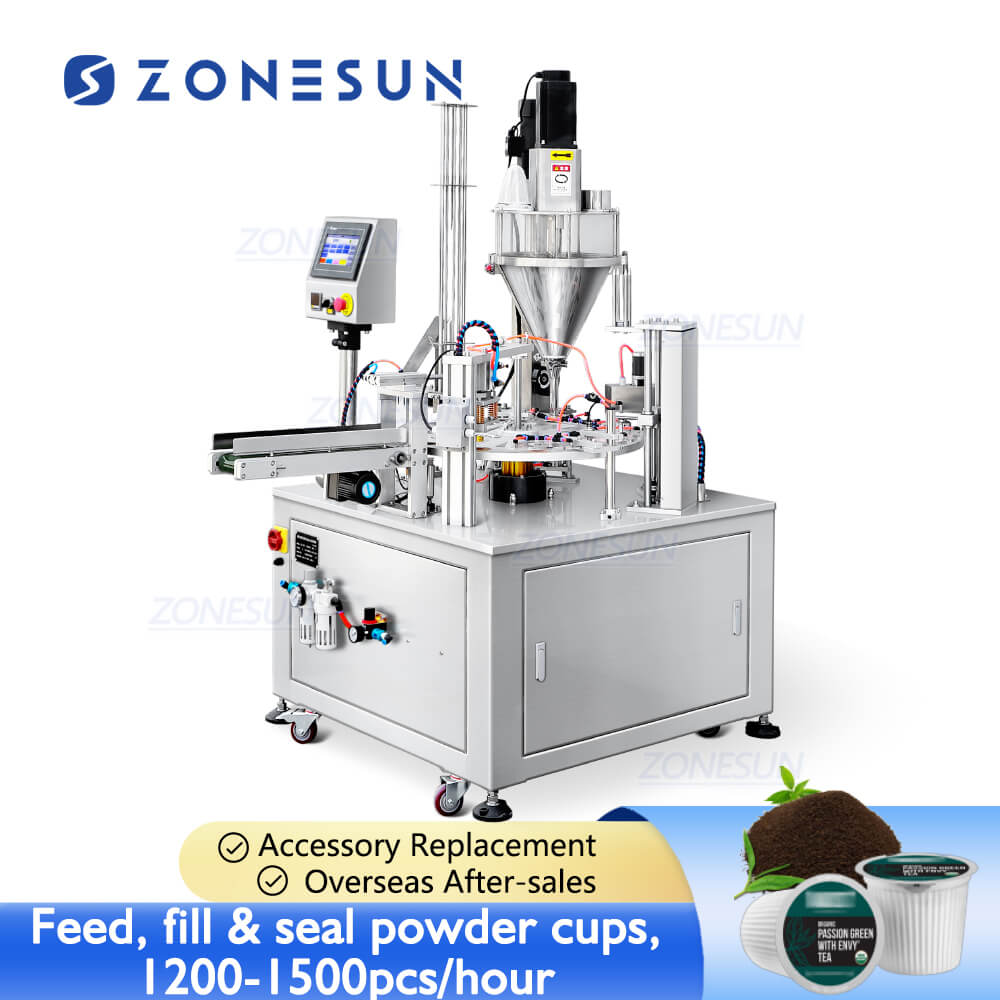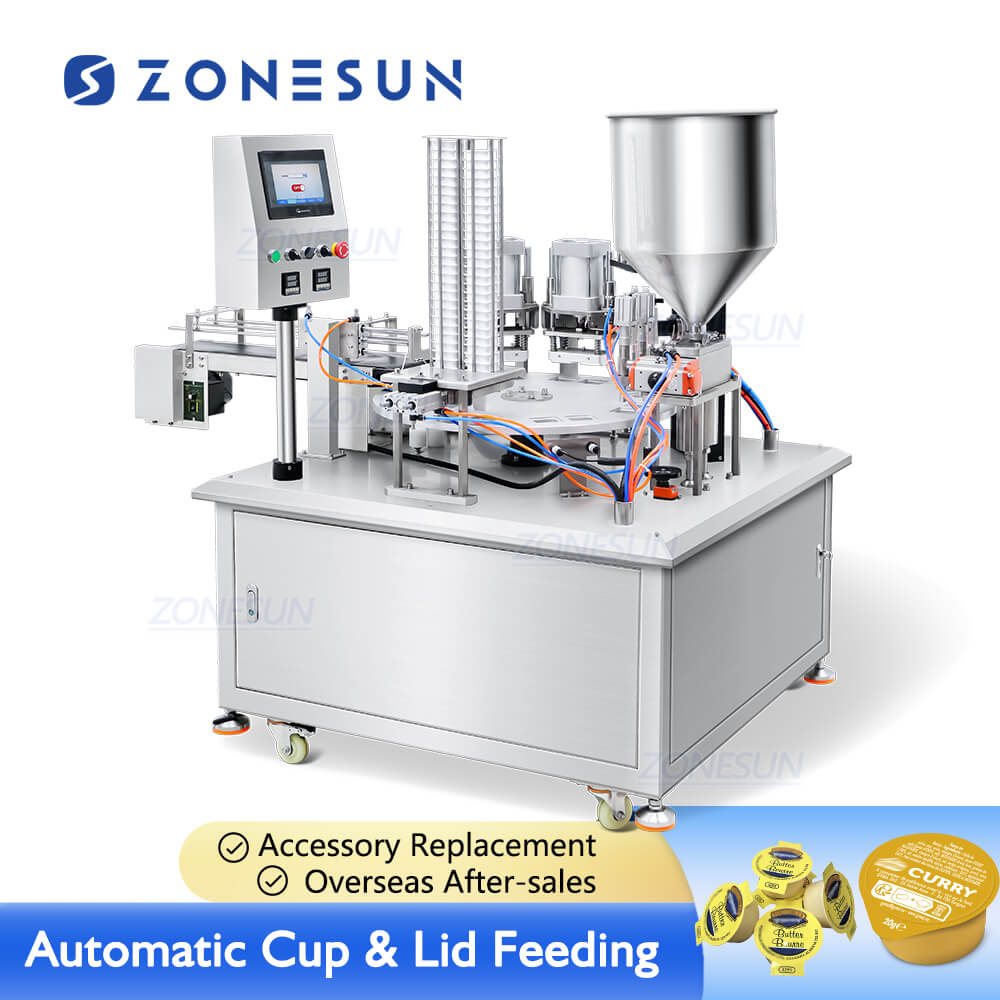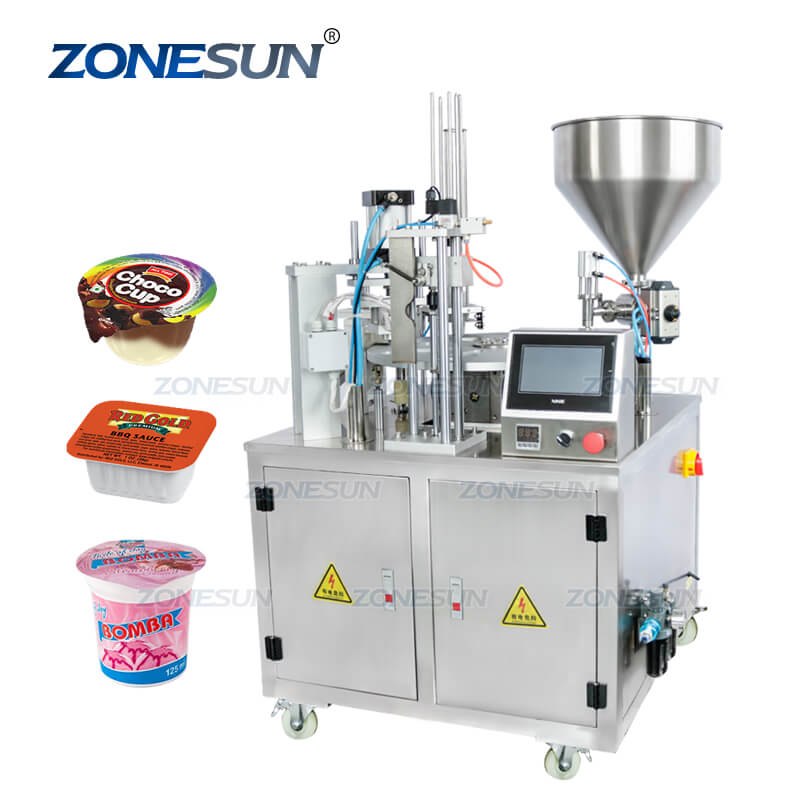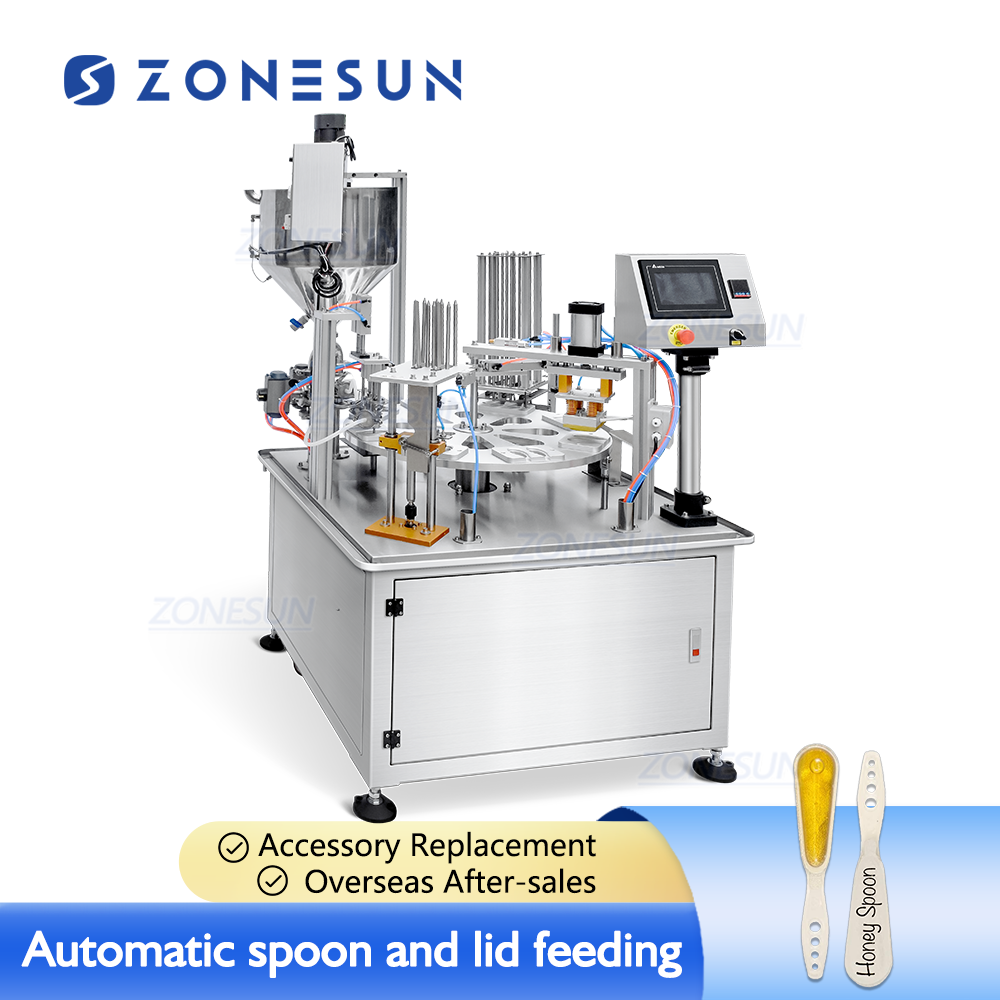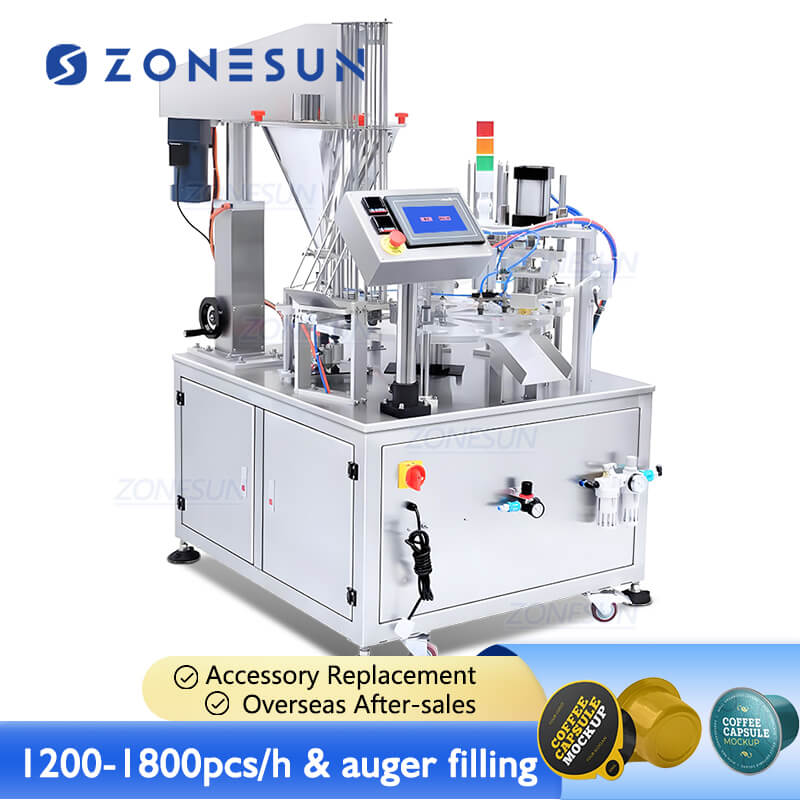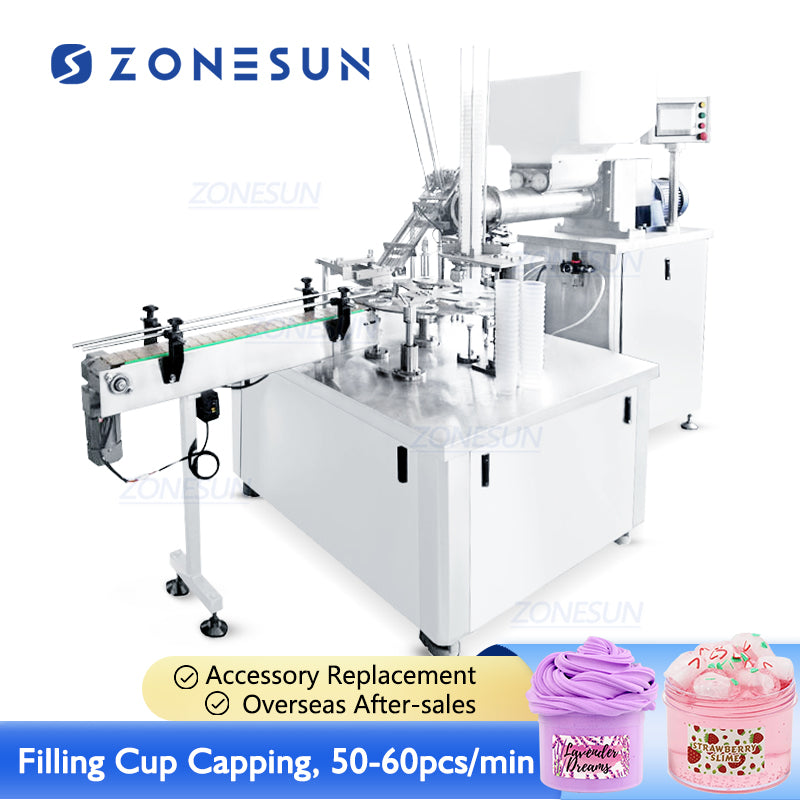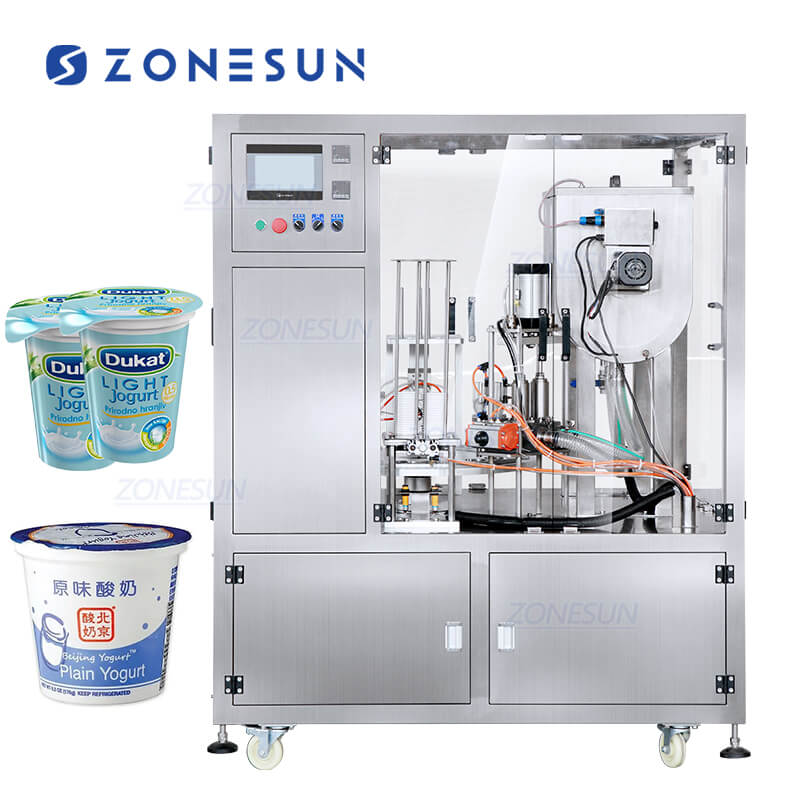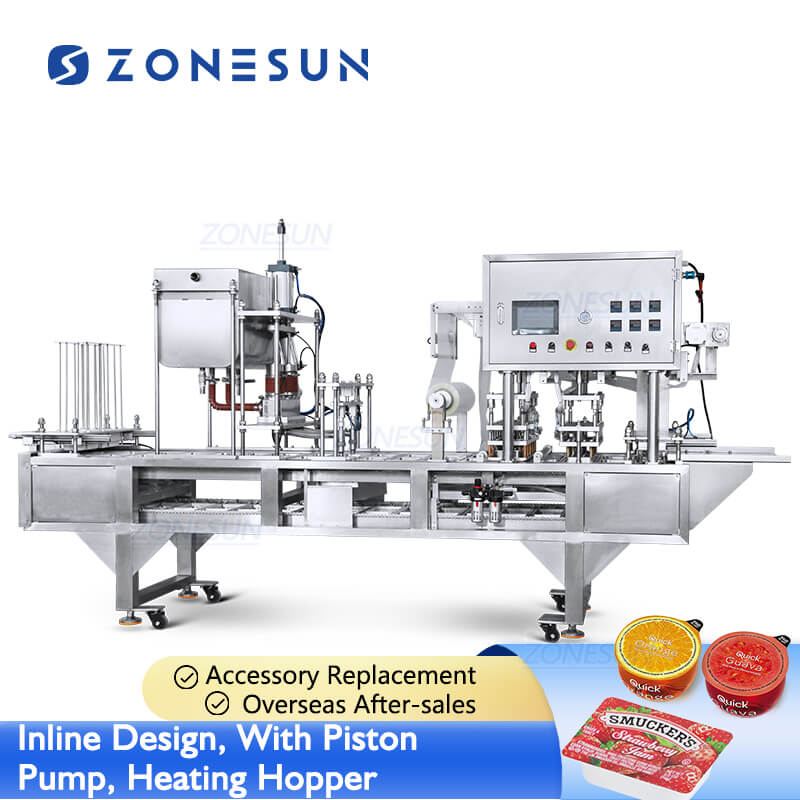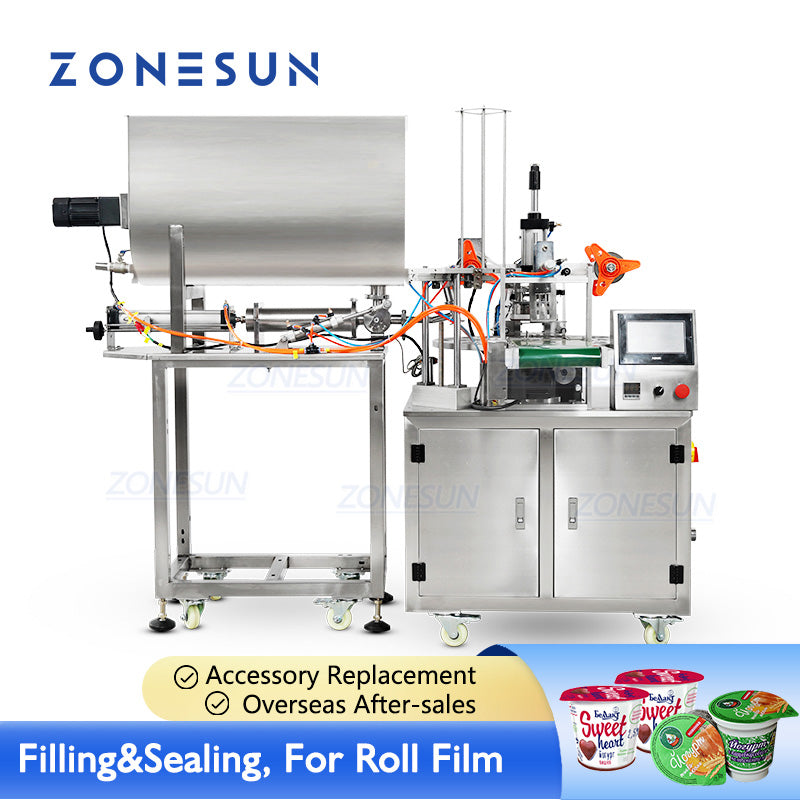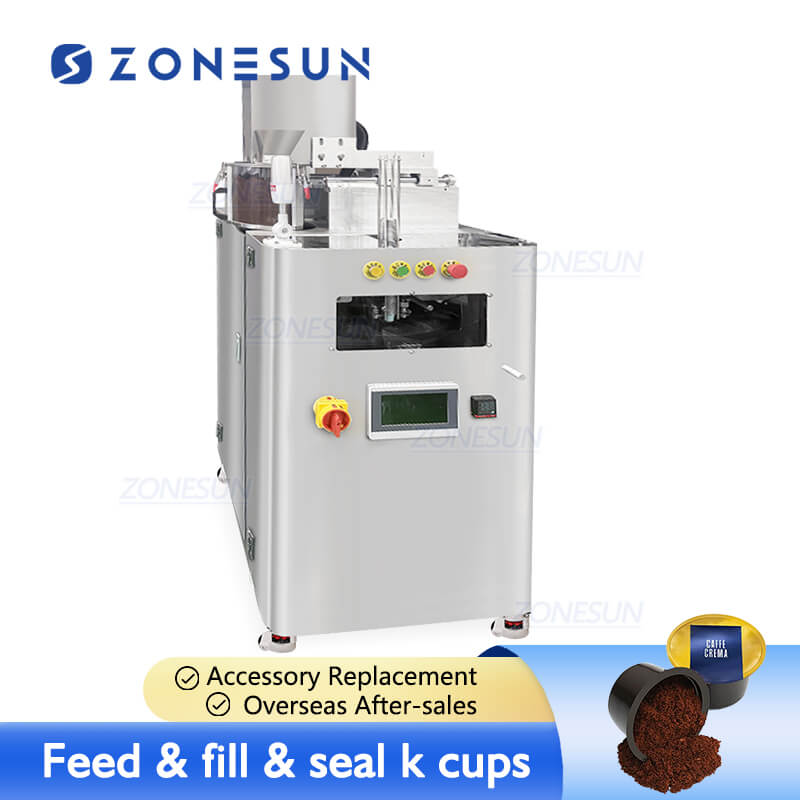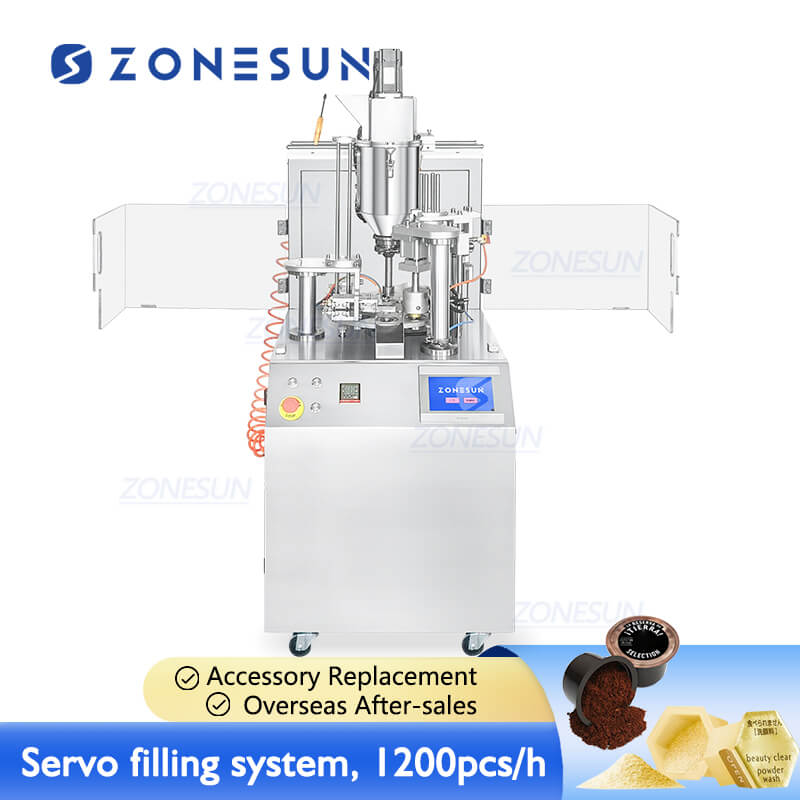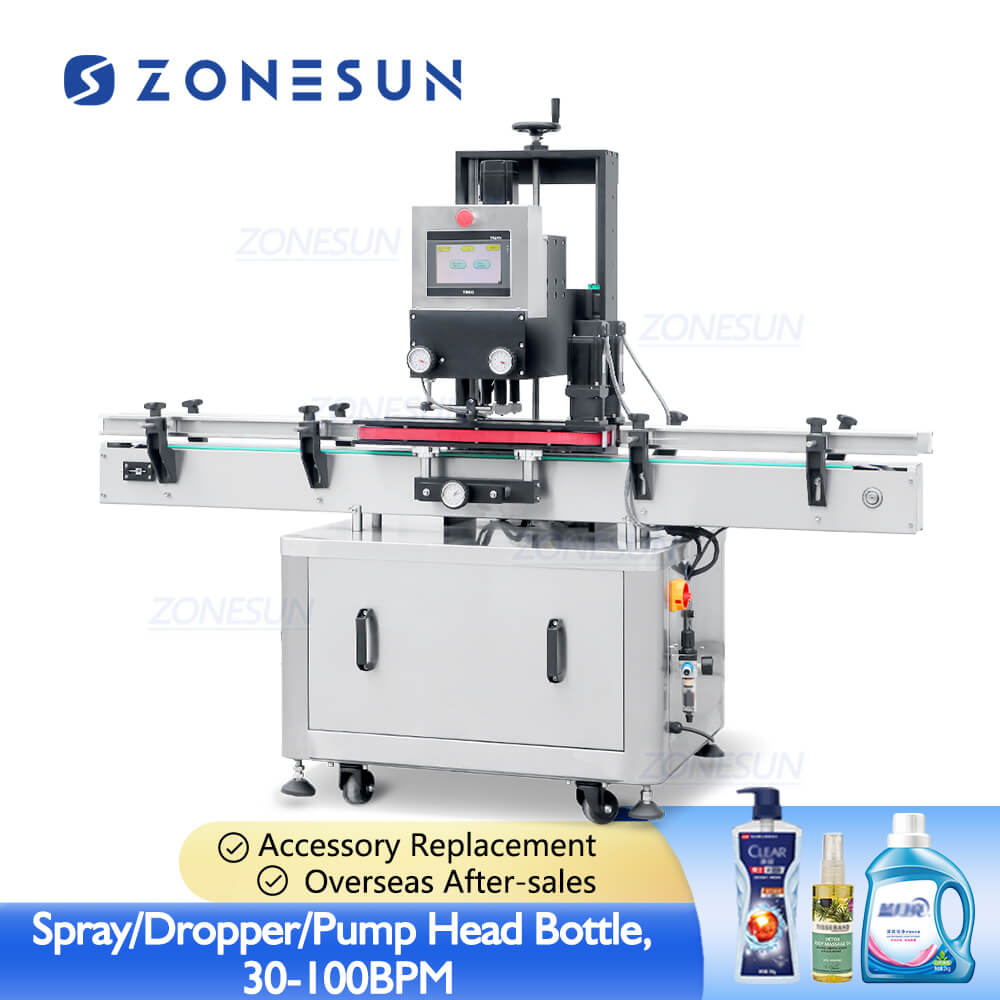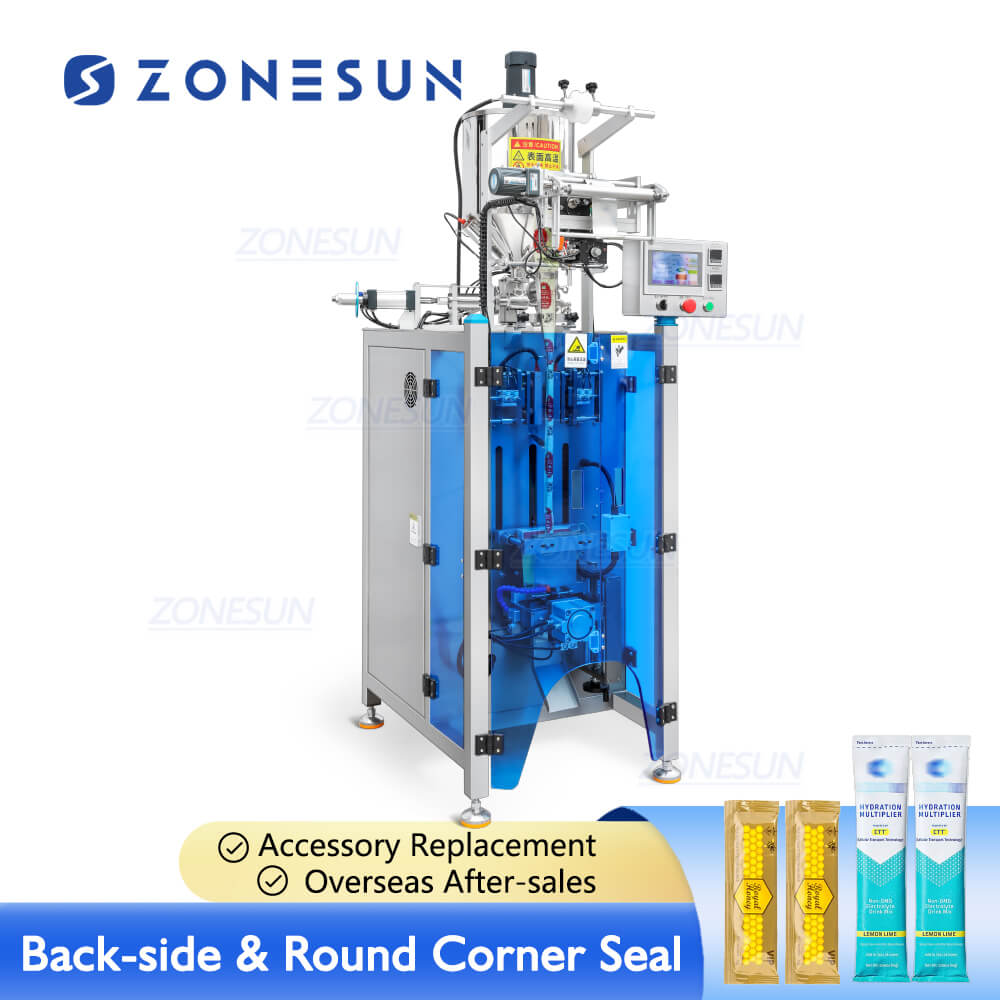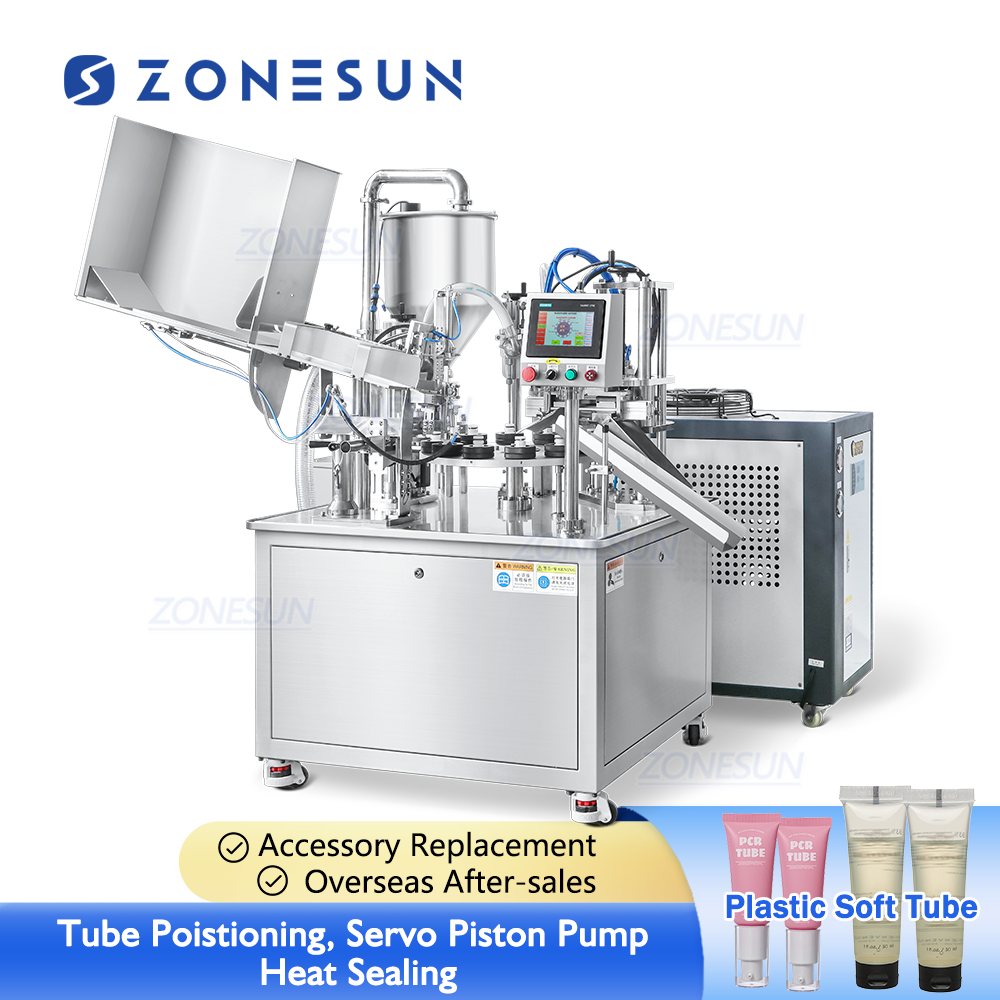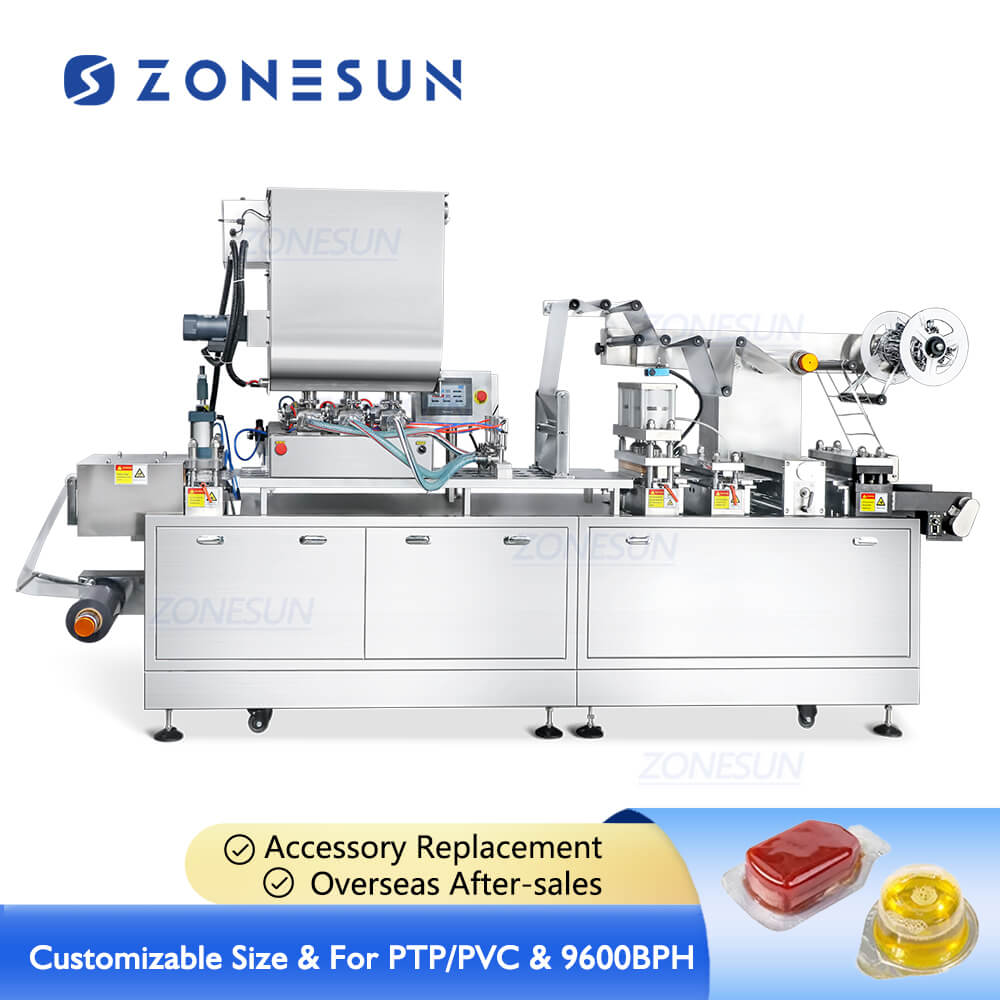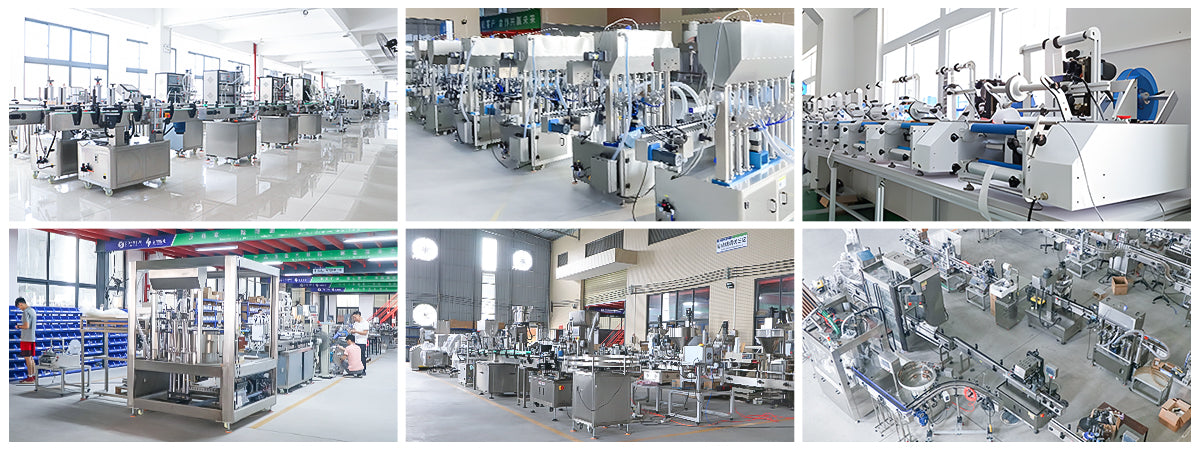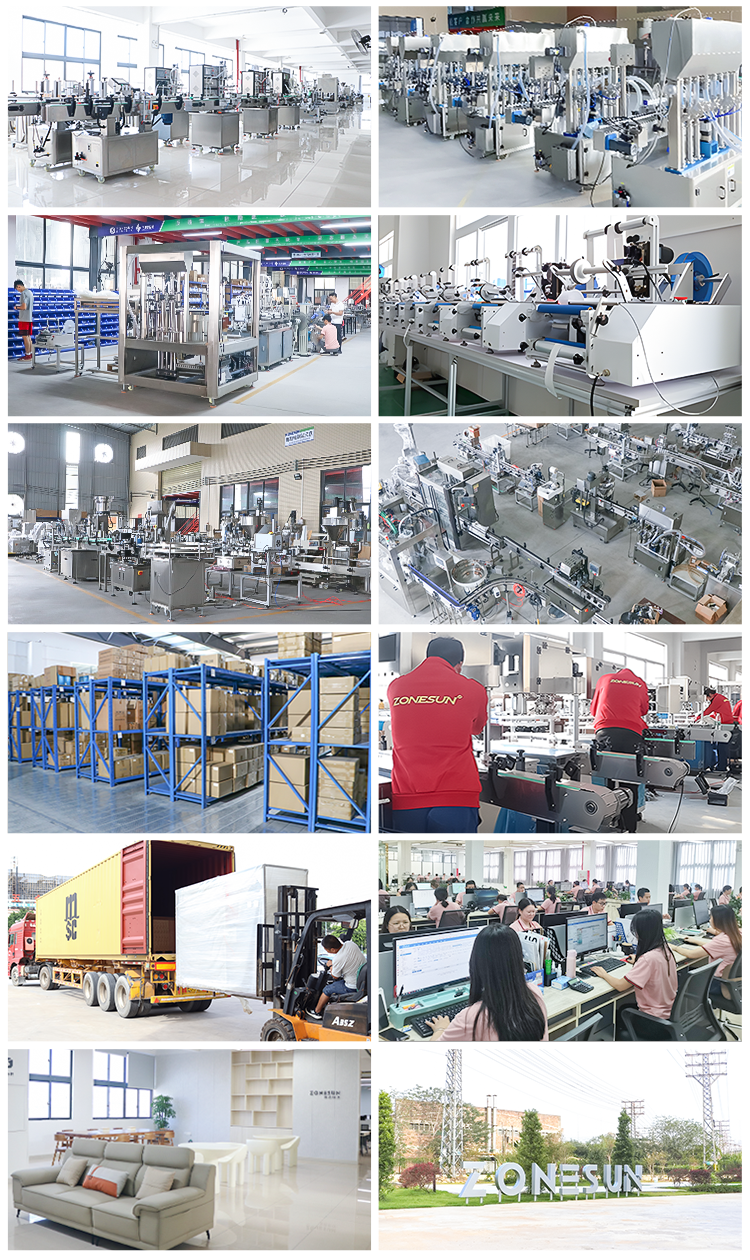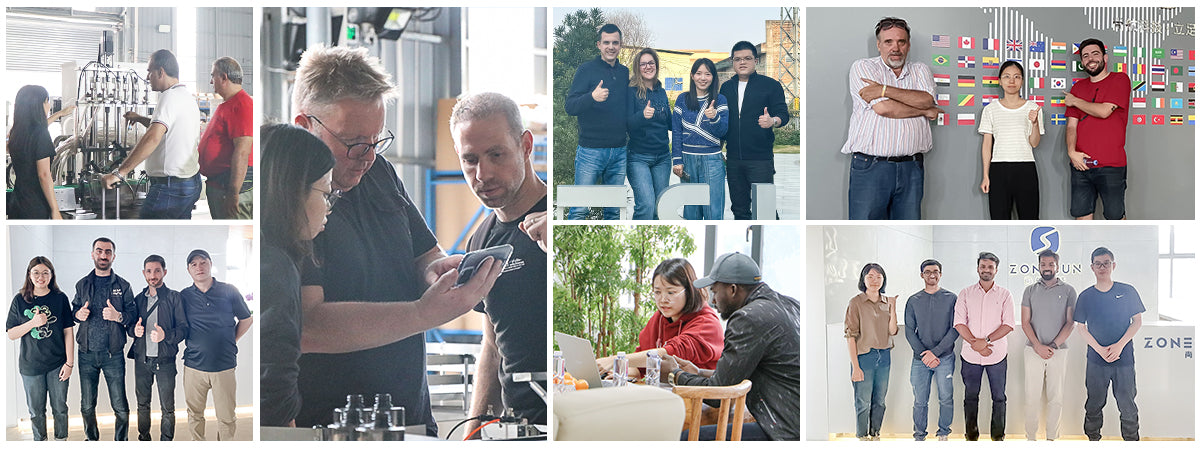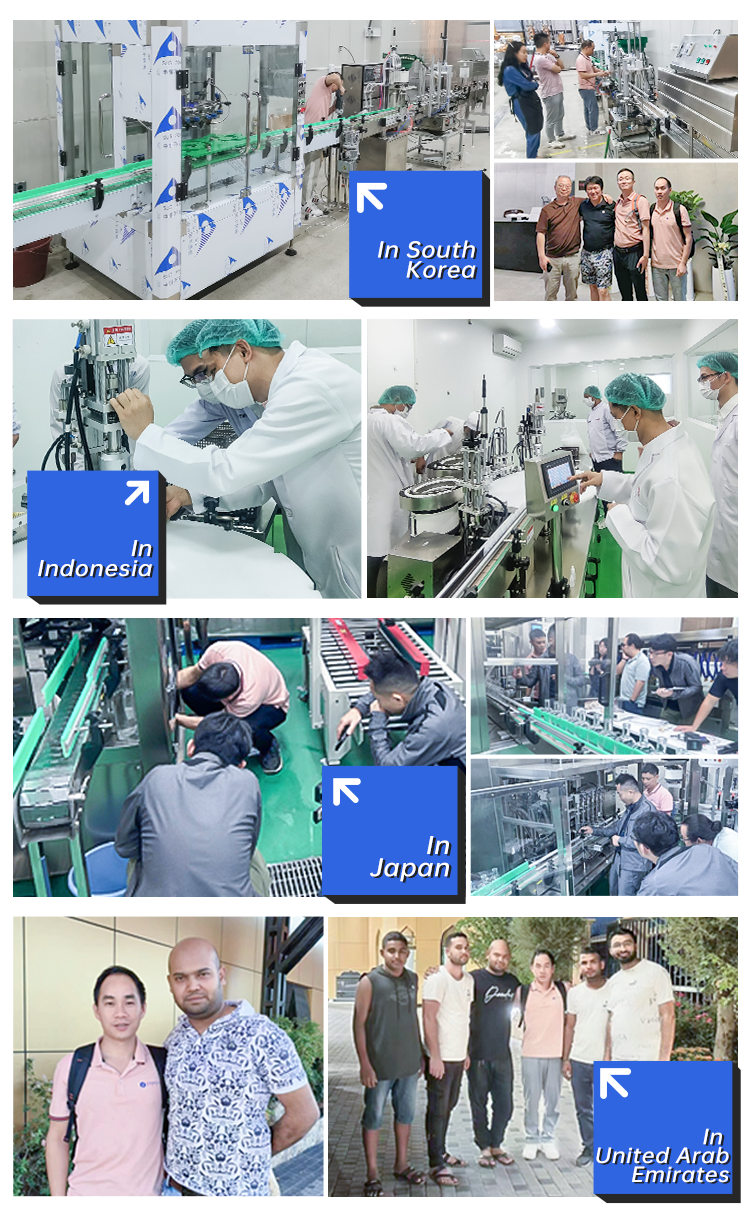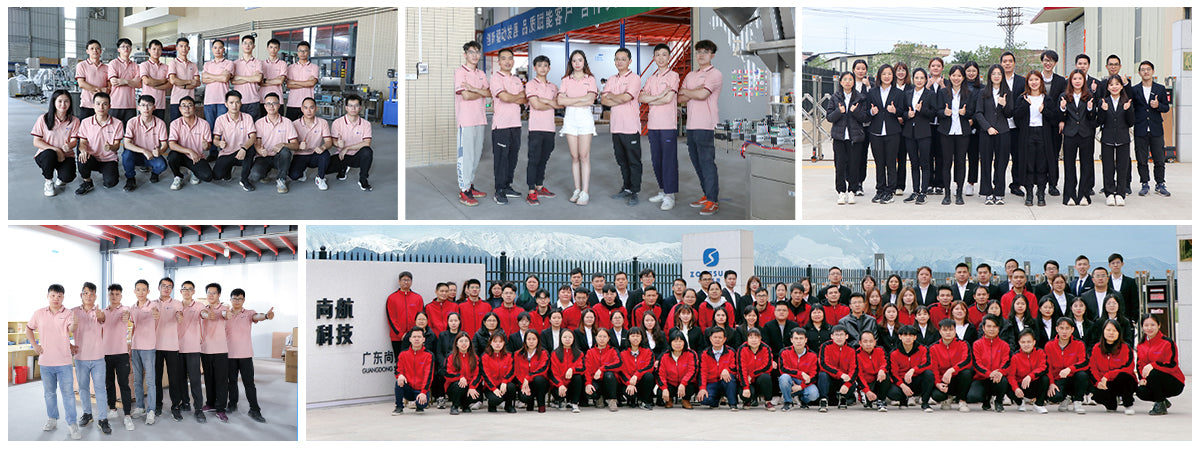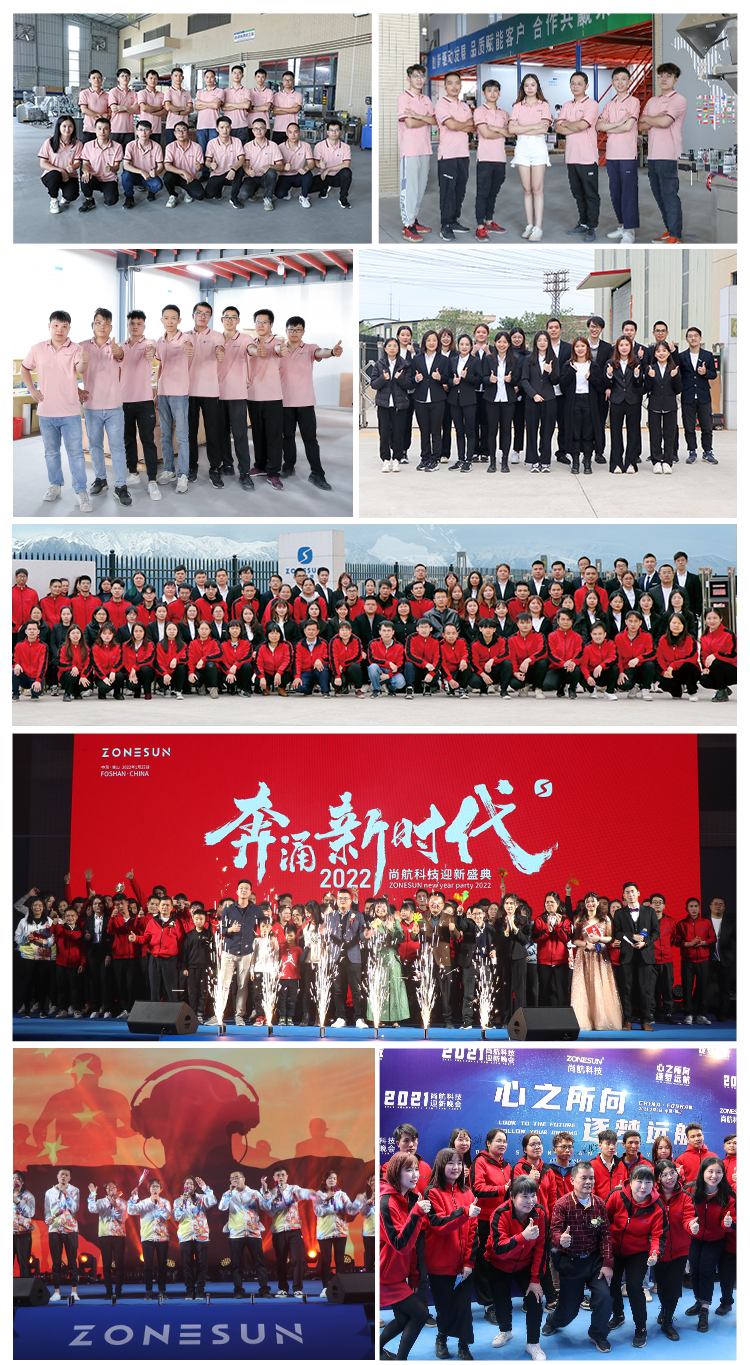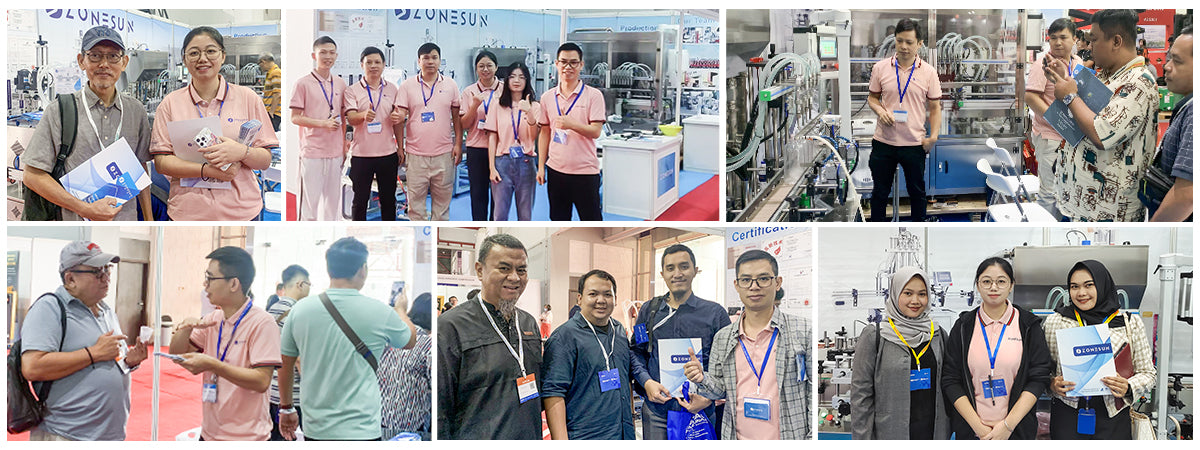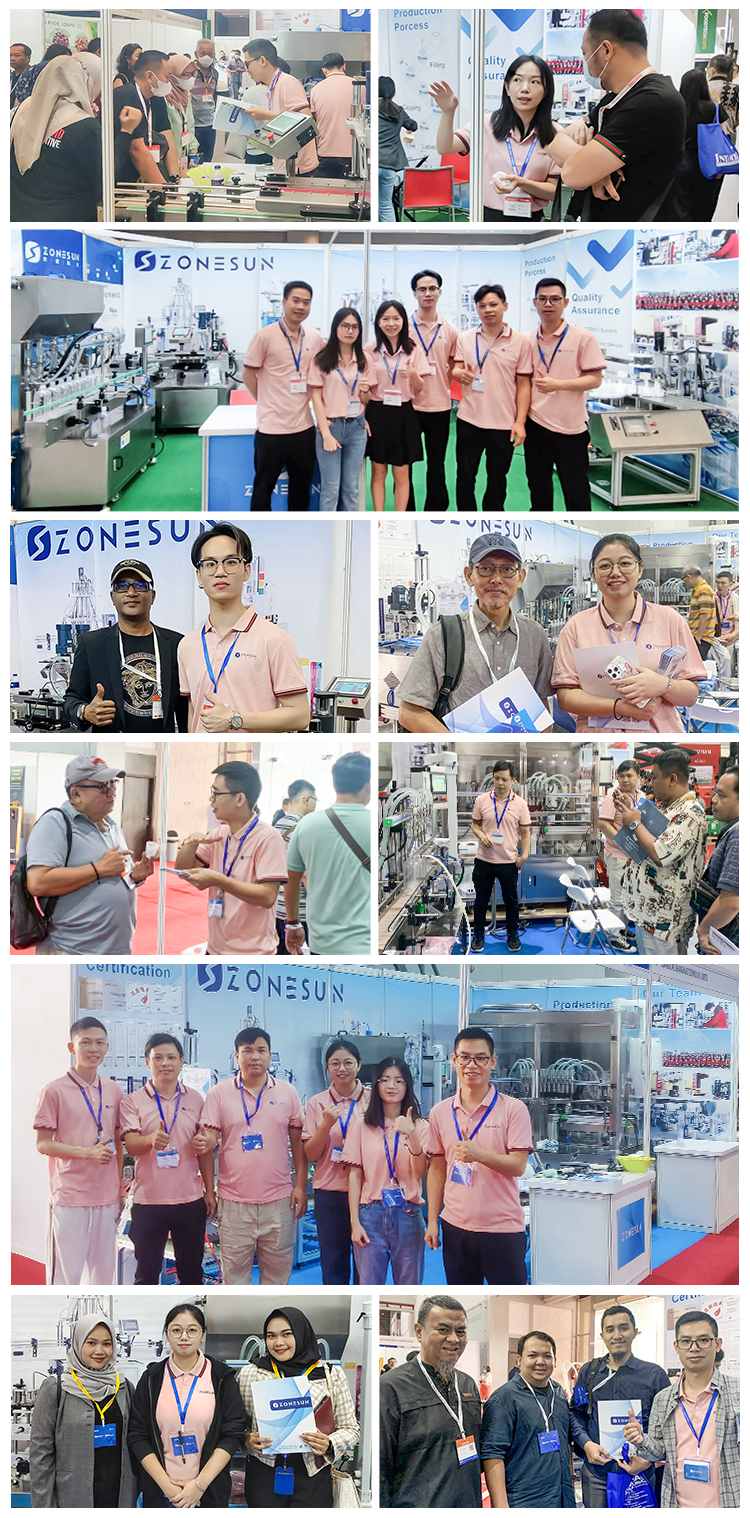Mesin pengisi cangkir adalah jenis peralatan pengemasan yang dirancang untuk mengisi cangkir dengan cairan, pasta, atau bubuk, dan menyegelnya. Pengisi gelas banyak digunakan di industri makanan dan minuman. Bergantung pada produk dan aplikasi, mesin pengisi cangkir juga dapat disebut sebagai mesin pengisi gelas K atau mesin pengemasan kapsul kopi.
Kategori terkait populer
Pelajari lebih lanjut tentang mesin penyegel pengisian cangkir
Bagaimana cara kerja mesin penyegel pengisian cangkir
Proses kerja mesin penyegelan pengisian cangkir biasanya mencakup langkah -langkah berikut:
Langkah 1: Pakan Piala - Cangkir kosong dimasukkan ke dalam cetakan fiksasi, (secara manual atau otomatis)
Langkah 2: Pengisian Produk - Mesin mengeluarkan jumlah cairan, bubuk, atau tempel yang benar ke dalam setiap cangkir. Ini dapat dilakukan melalui pompa piston, gelas volumetrik, atau sistem auger tergantung pada produk.
Langkah 3: Sealing - Setelah mengisi, cangkir disegel dengan film roll, foil atau tutup film.
Langkah 4: Pengkodean (Opsional) - Beberapa mesin menawarkan pengkodean tanggal, pencetakan nomor batch untuk mengurangi proses pengemasan.
Langkah 5: Pelepasan - Piala jadi dikeluarkan untuk pengemasan atau pemrosesan lebih lanjut.
Produk apa yang dapat dikemas oleh mesin pengisi cangkir
Mesin pengisian cangkir serba guna dan dapat menangani berbagai macam produk, termasuk:
Minuman: jus, teh, kopi, minuman yogurt
Produk bubuk: kapsul kopi, bubuk matcha sajian tunggal
Produk Tempel: Selai, Saus Celup, Madu, Gel, Salsas
Apa saja jenis struktural mesin penyegel pengisian cangkir, dan apa perbedaannya?
Mesin pengisian dan penyegelan cangkir umumnya dibagi menjadi pengisi gelas tipe linier multi-baris dan pengisi gelas tipe putar.
Mesin penyegelan pengisian gelas tipe linear multi-baris
Operasi: Cangkir diangkut dengan konveyor rantai cetakan, tetapi dalam beberapa baris berjalan secara paralel (mis., 2 × N, 4 × N, 6 × N, 8 × N).
Fitur:
Output yang lebih tinggi - Beberapa baris drop cangkir, mengisi, dan menyegel secara bersamaan, yang sangat meningkatkan produksi.
Jejak yang lebih besar - Mesin lebih panjang berdasarkan desain, dan baris tambahan peningkatan lebar, mengambil lebih banyak ruang dibandingkan dengan jenis rotary.
Cocok untuk produksi kontinu skala besar - seperti yogurt, jeli, puding, saus, dan sebagainya.
Biaya penggantian cetakan - Mengubah ke diameter cangkir yang berbeda membutuhkan satu set penuh cetakan, dan ini berarti investasi cetakan yang lebih tinggi.
Mesin pengisian dan penyegelan cangkir putar
Operasi: Piala ditransfer ke stasiun melalui meja putar roda bintang, menyelesaikan cangkir menjatuhkan, mengisi, dan menyegel melalui rotasi.
Fitur:
Jejak kecil - Desain mesin kompak sangat ideal untuk pabrik dengan ruang lantai terbatas.
Perubahan cetakan cepat - Memperbaiki cetakan dapat berubah atau dapat disesuaikan antara berbagai ukuran cangkir, ini lebih cepat dan lebih nyaman.
Kapasitas terbatas -Kecepatan produksi lebih rendah dibandingkan dengan jenis linier multi-baris, cocok dengan produksi skala kecil atau menengah.
5. FAQ
①Can mesin pengisian cangkir menangani berbagai ukuran cangkir?
Ya. Sebagian besar mesin pengisi cangkir mendukung pemegang cangkir yang dapat disesuaikan atau dapat diubah agar sesuai dengan ukuran cangkir yang berbeda, membuatnya semudah mungkin untuk beralih di antara berbagai ukuran cangkir dan bentuk.
② Mengapa mesin penyegelan pengisian cangkir saya tidak dapat menutup cangkir dengan baik?
Penyegelan yang buruk dapat dihasilkan dari:
A. Suhu penyegelan yang salah
B. Piala atau tutup yang tidak selaras
C. Bahan pengisian luapan mencemari tepi penyegelan
Pemeliharaan rutin dan penyesuaian yang tepat dari unit penyegelan dapat mencegah masalah ini.
③ Informasi apa yang perlu ditawarkan saat menyesuaikan mesin penyegelan pengisian cangkir?
Saat menyesuaikan, Anda harus menyediakan:
A. Ukuran dan bentuk cangkir
B. Jenis Produk (cairan, tempel atau bubuk)
C. Volume pengisian
D. Kecepatan kerja
E. Roll Film Sealing atau Film Lid Sealing
F. Fungsi Opsional (seperti Pemberian Makan & Menekan Penutup Luar, Pengkodean Tanggal)





